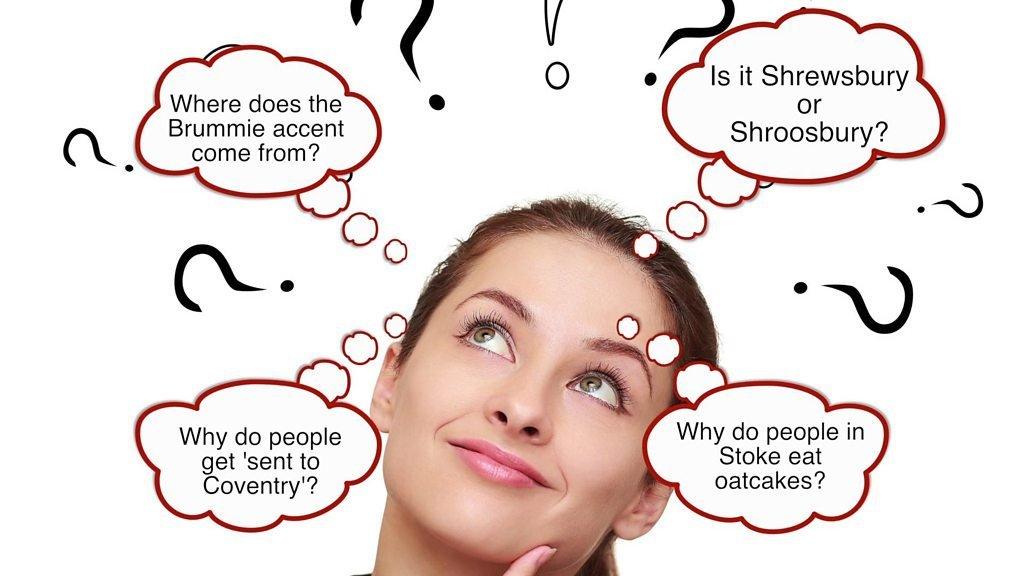West Midlands: Three things you wanted to know
- Published
Ask us your questions about where you live
People have been using Your Questions to ask us what they want to know about the West Midlands.
You wanted to know how Stoke-on-Trent became a centre for pottery when it was located so far away from clay.
You asked why Shrewsbury was not a city, despite having a cathedral.
And you were curious to find out if Rowley Regis had a royal connection. Here is how we got on with answering your questions.

'Why did Stoke become a centre for potteries when it is so far from the source of the clay?'
At the time of the Industrial Revolution, the clay mainly came from the south west, said Angela Lee, manager at the Gladstone Pottery Museum in Stoke-on-Trent.
She says what Stoke-on-Trent did have was previous experience before the Industrial Revolution of making pottery and, crucially, coal seams in the area.
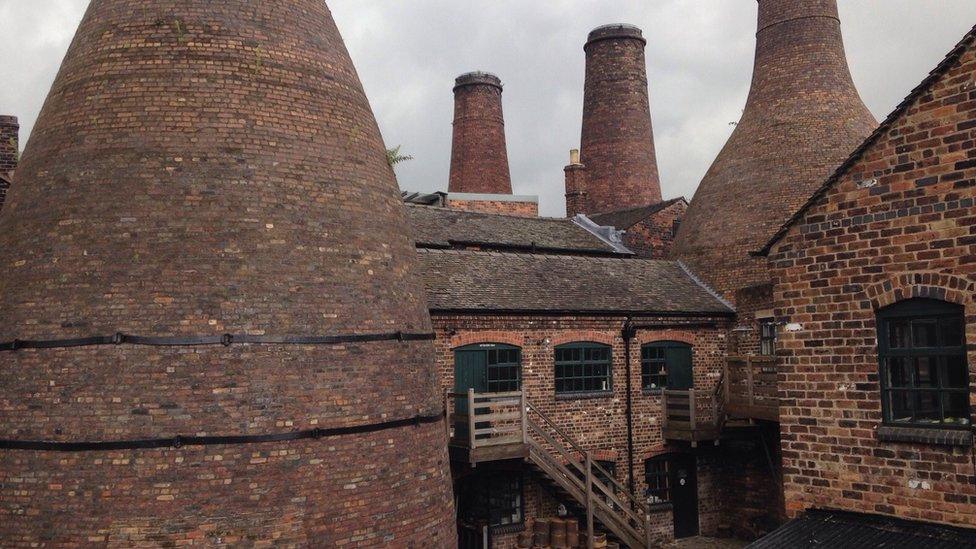
It is estimated there were up to 4,000 bottle kilns in Stoke-on-Trent in the Potteries' heyday
Angela says it takes around 10 times as much coal as clay to make a pot, so it was more cost effective to bring clay to the Potteries.

'Shrewsbury has a cathedral, but isn't a cathedral city like Lichfield, why is that?'
The simple answer is that having a cathedral doesn't guarantee city status, although the two have been linked in the past.
Blackburn and Guildford both have cathedrals, but are classified as towns, while Bath and Nottingham have city status, but no Anglican cathedral.
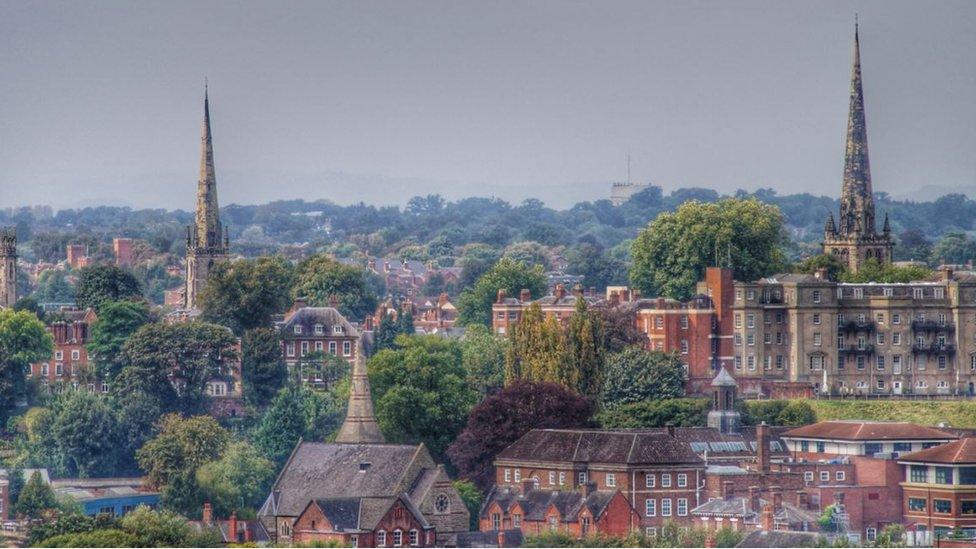
Shrewsbury twice applied for city status early this century, without any success.
The key thing has always been to get Royal approval, and these days that is done through a bidding process - Shrewsbury twice applied for city status early this century, without any success.
Size doesn't matter either. London isn't officially a city, external, but St Davids in Pembrokeshire, with only 1,600 inhabitants, is one.
It's also worth noting that Lichfield has an Anglican cathedral, but Shrewsbury's cathedral is a Roman Catholic one and while that doesn't matter these days, it might have influenced decision-making in the distant past.

'Does the name Rowley Regis have a royal connection?'
Paul Longhurst asked us: "Why is Rowley Regis so named? I always thought that places containing Regis as part of the name had some royal connection."
Frank Caldwell, Sandwell Council's heritage and museums manager, told us: "It was a royal manor - i.e. land that was held directly by the Crown and as such rented out - rather than given in return for feudal service. So tenure was always contractual rather than feudal.
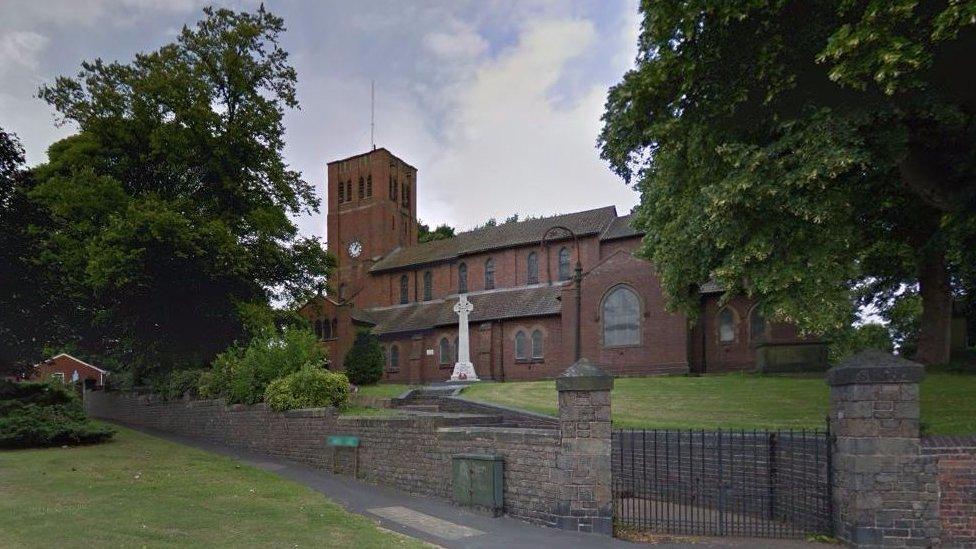
Rowley is derived from a pre-Saxon word which suggests Iron Age settlement
"The Regis appears first in the records about 1140, to determine it from Rowley Somery, which was held (feudally) by the de Somery family, the Earls of Dudley.
"The Rowley is derived from a pre-Saxon word which suggests Iron Age settlement but no direct evidence has been found.
"It doesn't appear in the Domesday book - but this is the case for most land held directly as Royal estates owned by King Edward the Confessor - post conquest William I took over these royal lands himself."
- Published17 February 2017
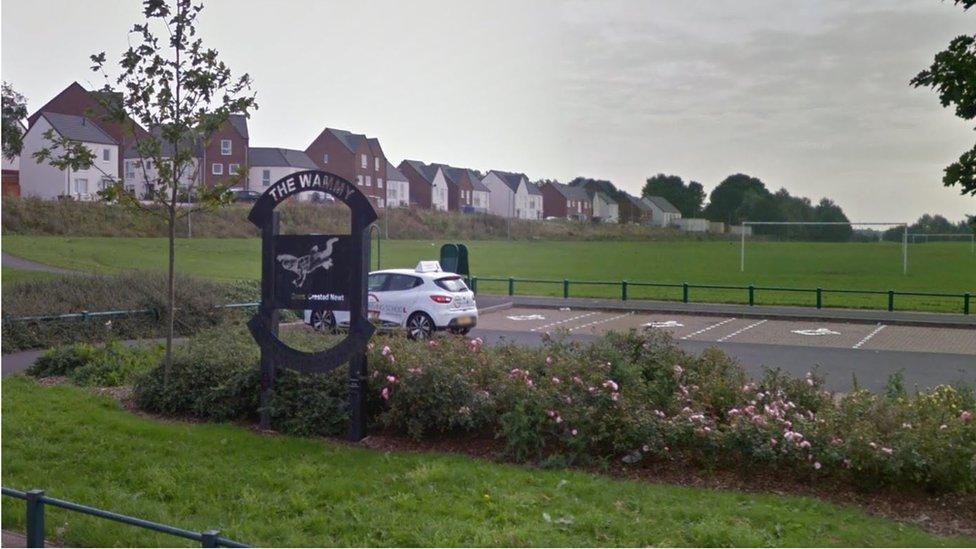
- Published10 February 2017

- Published3 February 2017

- Published27 January 2017
